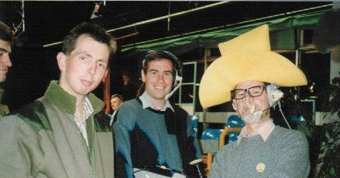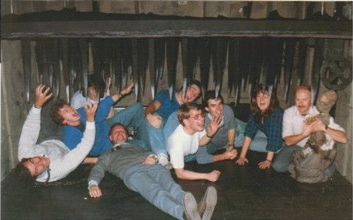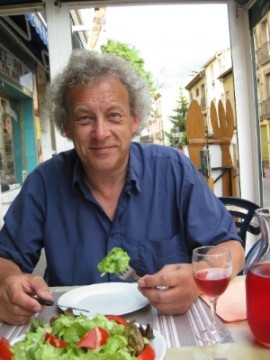


Copyright resides with the original holders, no reproduction without permission. Bottom two photos by James French.
These photos are from a 1988 children’s live drama, recorded in Studio A at Pebble Mill, called What’s Your Story, with Crew 3. Included in the photos are Keith Salmon, James French, Derek Hallworth, Simon Bennett, Richard Stevenson, Adrian Kelly, Nigel Beaumont, Noel Paley, Karen Lamb and Dave Ballantyne.
What’s Your Story was a drama series with the storyline continued daily with ideas phoned in by viewers.
Christopher Pilkington was the exec producer, Richard Simkin the director and Richard Simon the producer. Dave Bushell was the lighting director.
The series featured: Sylvester McCoy (narrator), Bill Stewart, Susie Baster, Ben Benson, Tim Diggle, Lisa Rose (Laura), Stephen Tredre and Grace Wilkinson.
The following comments were left on the Pebble Mill Facebook group:
Stuart Gandy: ‘I remember this well. It was quite a challenge from an engineering point of view, but it worked well. I think this was the programme that I got my name on the credits. Engineers usually didn’t unless they were directly driving the gallery. In this case the credits included absolutely everybody that had been involved, however slight.’
Paul Grice: ‘I think it also held the record for the number of phonecalls generated at one time. As a fairly new Comms manager at the time it was my responsibility although I think Mike Day did the real work!’





